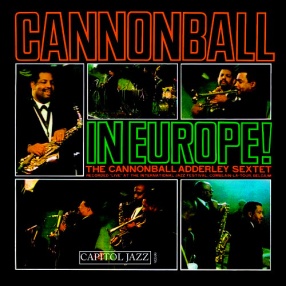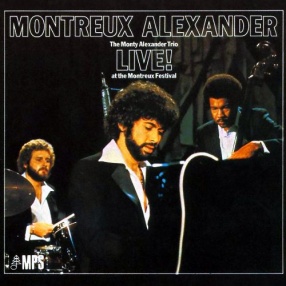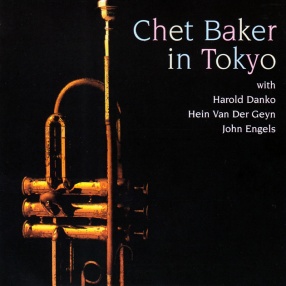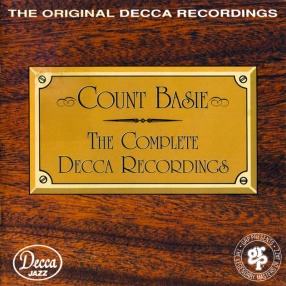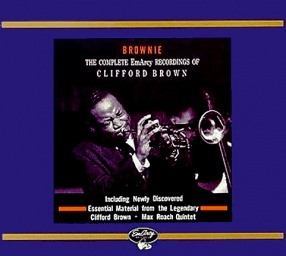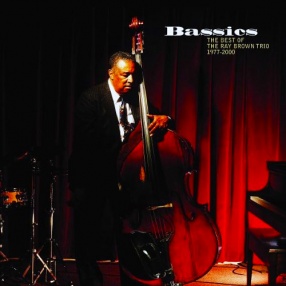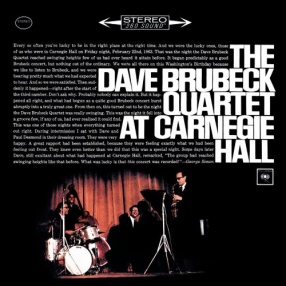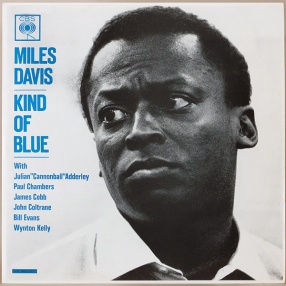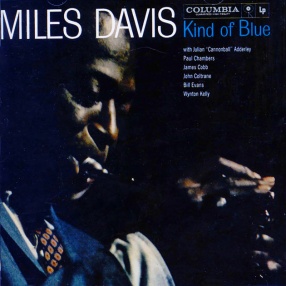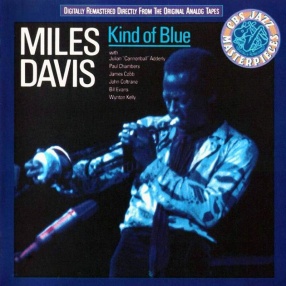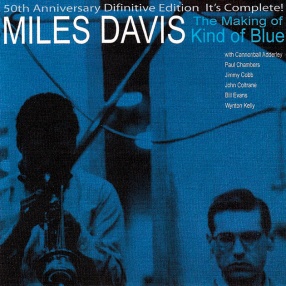JAZZ GIANTS
© Arnold van Kampen, 2012
Anmerkung: Arnold von Kampen ist leider inzwischen ganz unerwartet verstorben und kann seine großen Projekte (auch auf dieser Website) nicht fortsetzen. Wir haben entschieden, neben seinen schon sehr weit gediehenen Peterson-betrachtungen auch Fragmente wie dieses Kapitel auf unserer Seite zu belassen.
INTRODUCTION
Earlier in the Introduction to "ALL TIME JAZZ CLASSICS", I explained the reason for two sections, and why I decided to do this chapter "Jazz Giants”.
Of course selecting the 350 best JAZZ-CDs and JAZZ-DVDs was a huge and difficult job. I wanted to give you the best possible list, and to be as objective as I could.
Selecting the true "Jazz Giants”, limited to a number of some 50, was even harder and certainly very personal.
Maybe in the future I will add more names, but for the moment, I start with these.
If you are interested in a list of the 350 best JAZZ-CDs and/or JAZZ-DVDs please visit our page "BEST JAZZ ON CD & DVD", also called "ALL TIME JAZZ CLASSICS"
_______________________________________________________________
Cannonball Adderley (Julian Edward Adderley) (1928-1975) - Sax (alto),
leader
Hard Bop, Soul Jazz.
One of the greatest alto saxophonist in jazz, "Cannonball (nickname) had an exuberant and happy, outgoing style. He communicated, also verbal, with his audience and became one of the most popular figures in jazz. With his younger brother Nat Adderley (cornet) he started his own group, studied music, became music teacher and joined Miles Davis in 1957.
He was one of the musicians involved in the most sold jazz classic "Kind of Blue”, that sold over 16 million copies worldwide.
Cannonball left Davis after this album was made and started his own group with his brother again.
That group, that played "soulful, funky” jazz, soon hat hits with "This Here”, "Work Song”, Mercy, mercy, mercy”, "Sack O’Woe” and "Gemini”.
Her recorded "Something Else” with Davis as his sideman, and many "live” albums like "Mercy. Mercy, mercy”, "In Europe”, "Things are getting better”, and "In Person” with singers Lou Rawls and Nancy Wlson, who both joined the group spontaneous, when spotted by and in the audience.
_______________________________________________________________
Monty Alexander (Montgomery Bernard Alexander) (1944)
Piano / Hard
Bop, Mainstream.
Born on D-Day in Kingston Jamaica, he was named after English general
Montgomery.
Left Jamaica and went to Miami where he early joined Ray Brown and Milt
Jackson.
Also got a helping hand from Frank Sinatra to start his career in the
U.S. Later Oscar Peterson introduced him to Hans Georg Brunner-Schwer to
start recording for MPS.
Recorded fine albums, that are now released together in a box-set
"Alexander The Great”.
His, now legendary live album "Montreux Alexander”, brought him
international fame.
That same group, with bassist John Clayton and drummer Jeff Hamilton, did other fine albums, like "Live in Holland”.
Starters should be warned, because part of his cd’s is done in a style of his native Jamaica with steel pans, and not in his usual, happy, swinging style.
Although influenced by Erroll Garner and Oscar Peterson, Monty developed his own style.
_______________________________________________________________
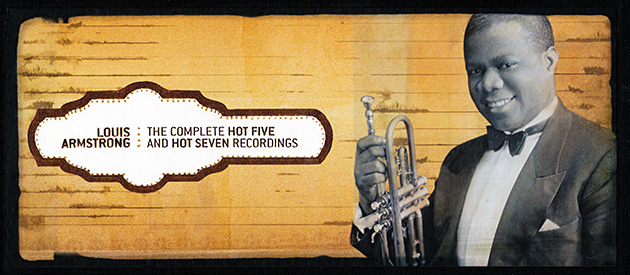
Armstrong, Louis – The Complete Hot Five
and Hot Seven
Recordings
Columbia C4K 63527 4-CD-box (with book).
Louis Armstrong (1901-1971)
Trumpet, vocals, leader
New Orleans
Jazz, Dixieland.
Louis Armstrong is one of the most famous figures in jazz, and most certainly a pioneer in many ways (improvisation, scat-vocals).
Born in New Orleans he developed his own trumpet style in the 1920s with his famous groups The Hot Five and The Hot Seven.
A virtuoso on trumpet, he also became a famous singer in pop with hits
like "Hello Dolly”.
Recorded with Ella Fitzgerald jazz classics like "Ella & Louis”
and "Ella & Louis, Again”.
He also participated in motion pictures and became world famous by his
world wide tours.
Later in his career, he had problems with his lips, so he sang a lot
during concerts.
The song "What a wonderful world” used in a Bond movie brought him late fame, again, in 1968.
_______________________________________________________________
Chet Baker (Chesney Henry Baker 1929–1988)
Trumpet, vocals,
leader
West Coast, Cool.
About Chet Baker is a lot written, because of his talents, looks and the way he led his life and died. Gifted and talented young Chet played in the West Coast/ Cool style in an intimate way. Soon became popular, also of his photogenic looks and intimate, romantic singing of songs like "My Funny Valentine”. He was chosen to play with Charlie Parker in 1952 during a contest, but soon also used drugs as Charlie "Bird” Parker did.
After Parker he played with baritone sax player Gerry Mulligan, and
started his own group.
His addiction to heroin soon brought him to prison.
Because of the laws in the US about using drugs, he left his country, to wander around in Europe, where he was constant on the run for the police in his little Alfa.
He recorded a lot, and for everybody that would give him money for drugs, so half of his albums are not worth listening too.
So be very careful in buying cd’s of Chet Baker.
"In Tokyo”(also on dvd) is certainly his best, done without drugs, but with methadone, because of the laws in Japan.
Other cd’s, with Gerry Mulligan and Stan Getz, in the earlier list, certainly are worth buying.
_______________________________________________________________
Count Basie (William Basie 1904-1984)
Piano, organ, leader
Swing,
Piano Blues, Big Band.
William "Count” Basie was one of the most beloved in jazz, because of his music, but also because of his warm personality.
The Count could stretch out on the piano if he wanted, but for the
introduction in his band, he developed his own style on piano, with
single notes.
His swinging band had the finest rhythm section during his early Decca
years, but using the rhythm guitar of Freddie Green, also was his trade
mark during later years.
He started in the 30ths, in Kansas City, where he took the place of Bennie Moten, after his death, as a leader.
Young John Hammond heard his band on the radio, and brought it to New
York City.
Basie used singers like Jimmy Rushing and Joe Williams in his bands, but
also accompanied stars like Frank Sinatra in Las Vegas "At the
Sands”, Sammy Davis Jr. and later in his career Ella Fitzgerald
"Basella”.
In the 60ths had young trumpet player/arranger Quincy Jones in his band, and did fine recordings.
His paring with the complete band of Duke Ellington "First Time” remains a jazz classic, and one of the greatest big band recordings ever.
_______________________________________________________________
Art Blakey (Abdullah Ibn-Buhaina, 1919 - 1990)
Drums, leader
Hard
Bop.
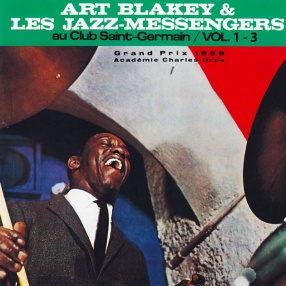
Blakey, Art & His Jazzmessengers
Au Club Saint Germain
(live)
Blue Note or RCA (Japan)
2 or 3-CD-Box R30J-1001-2 / BVCJ
– 8606-8.
Drummer Art Blakey became famous because of his group "The JazzMessengers” and his own style of drumming. Rooted in the core elements of swing and blues, "Moanin’”, "Justice” and "Blues March” became hits in the 60ths. The album "Moanin’” became a jazz classic, while "At Birdland”, with trumpet player Clifford Brown and the hard swinging "Au Saint Germain” are among his very best.
The JazzMessengers became sort of a school for new jazz talent, and famous musicians like: Clifford Brown, Lee Morgan, Freddie Hubbard, Johnny Griffin, Jackie McLean, Donald Byrd, Benny Golson, Bobby Timmons, Wynton and Branford Marsalis, graduated in "Art Blakey’s School for Swing”.
The member that never left, was its leader: Art Blakey.
_______________________________________________________________
Clifford Brown (1930 – 1956)
Trumpet, leader
Hard Bop, Bop.
One of the great tragedies in jazz was Clifford Brown’s death in a car
accident a the age of 25. He was already ranking with other great
trumpet players like Dizzy Gillespie, Miles Davis and Chet Baker, and
still improving.
He spend some time in Tadd Dameron’s and Lionel Hamptons bands, before
he joined Art Blakey and his JazzMessengers in 1954:
See: "At Birdland, vol 1 + 2”.
Together with drummer Max Roach formed his own group, before he died.
"Brownie” (his nickname) had a fat, warm tone and already a mature way of improvising.
He will always be remembered by the fine song: "I remember Clifford”.
_______________________________________________________________
Ray Brown (Raymond Matthews Brown)
(1926-2002) Bass, leader
Bop,
Mainstream
The huge, rock-solid, brown sound of Ray Brown will always be remembered, as he recorded over/participated with 2.000 cd’s. Still very young, he decided to go to New York City, to 52nd Street (see picture), to join a jazz group. He walked into Hank Jones, the piano player he already knew, who introduced him to Dizzy Gillespie, and instantly became a member of his band.
The rhythm group of Dizzy’s band had piano player John Lewis, vibes player Milt Jackson and drummer Kenny Clarke, and together with Ray Brown, this group became the Modern Jazz Quartet.
However Ray was on crossroads.
During the same time he married Ella Fitzgerald, and became the leader of her backing trio (with Hank Jones on piano).
Another challenge became a young Canadian piano player, who did his debut with Ray in 1949 in the famous Carnegie Hall, and became instant famous.
Finally Ray Brown decided to join Oscar Peterson.
First as a duo, later in trio’s (first with guitar player Herb Ellis, later with drummer Ed Thigpen), the Oscar Peterson Trio, soon became world famous.
Ray stayed with Peterson for over 15 years, but because of the constant touring world wide, he decided to become a studio musician in California.
He did record with every big name in jazz, but also with Frank Sinatra
and Gilbert Bécaud.
He returned to the concert halls with the L.A. Four, but later decided
to form his own trio.
In that Ray Brown Trio, the first piano player was Monty Alexander, who
was followed by Gene Harris, Benny Green, Geoff Keezer and finally Larry
Fuller.
Beside this trio he also led a group of bassists: "Superbass”, and joined Peterson again during 1990-1993 as a member of the "legendary trio”.
(See also the Oscar Peterson chapters on this website)
_______________________________________________________________
Dave Brubeck. (David Warren Brubeck) (1920)
Piano, leader
West
Coast, Cool.
Piano player Dave Brubeck sold millions of records and became world
famous, during the time the classic Dave Brubeck Quartet, had his world
wide hit: "Take Five”.
That group with (alto) sax player Paul Desmond, who dominated the
Quartet’s typical sound, bassist Gene Wright and drummer Joe Morello,
made the million seller "Time Out”, with "Take Five” on it in
1959.
But the record company thought nothing of "Time Out” so it remained on the shelves for several years.
Brubeck developed his own style influenced by classical teacher/composer Darius Milhaud.
But after Desmond joined his group in 1951, the Dave Brubeck Quartet became famous, and recorded albums like "Jazz goes to College”.
In 1961 "Time Out” was finally released and "Take Five”, written by Paul Desmond, became a success.
The Quartet became soon world famous, and toured the world.
Certainly the best version of "Take Five” is on the group’s best album, first a 2-LP, now a 2-cd "At Carnegie Hall”.
In 1967 Paul Desmond left the Quartet to start his own career, and did his best works during the years that followed.
(See also Paul Desmond)
_______________________________________________________________
Miles Davis - Kind Of Blue
Arnold van Kampen wollte diesem großartige, bahnbrechenden Jazz-Highlight ein eigenes Kapitel widmen.
Leider ist nun wegen seines plötzlichen ganz und gar unerwarteten Todes nichts mehr aus seinem Projekt geworden.
_______________________________________________________________
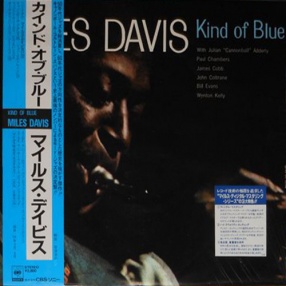
_______________________________________________________________
If you are interested in a list of the 350 best Jazz-CDs and / or JAZZ-DVDs please visit our page "ALL TIME JAZZ CLASSICS".
_______________________________________________________________
Arnold van Kampen, © 2012
______________________________________________

